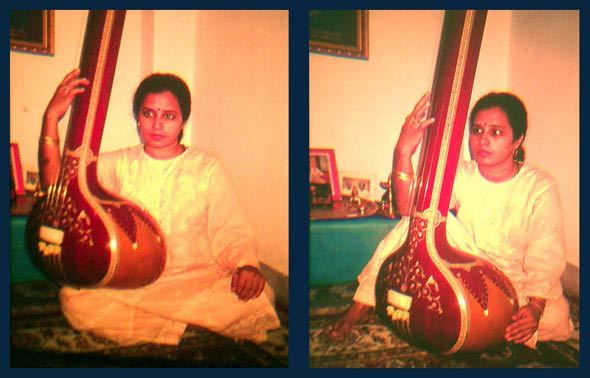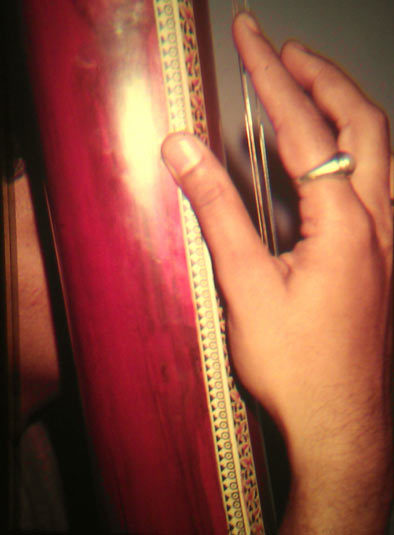Playing positions and technique 2

Playing technique
The fingers of the right hand should run parallel to the strings between 1/3 and 1/2 of the way up the neck. In the case of playing a large tanpura in the vertical position, it may be helpful to rest ones elbow on a raised knee to support the arm. Feel free to turn the tanpura until the position of the hand is at its easiest and most relaxed.
The strings of the tanpura are not plucked but are softly pressed down into a vertical vibration. This is a very important point to understand and is crucial for the correct sound production from the jawari. The bridge is designed in such a way that it requires the string to vibrate vertically upon it to enable the overtones to be fully audible. A horizontal vibration will not allow the overtones to completely emerge, thereby defeating the purpose.
Placing the fingers of your right hand parallel to the strings, slightly press down on the first string, PA, using the middle finger until it rolls off the finger top. The finger falls onto the second string, SA, but makes no further sound. The same action is repeated on the second, third and fourth strings, only this time with the index finger. Whilst playing the tanpura one should take special care of the balance. By this I mean the volume at which the individual strings are played. The two middle strings, the joras, should be slightly louder than the other strings, this emphasises the tonic, and the tanpura will sound in balance.

